San Juan de Ulúa is a 16th-century island fortification in the Mexican Gulf Coast city of Veracruz that’s definitely worth a visit.
It’s been on my list for a while, so I was thrilled when we finally got the opportunity to check it out. Best of all, it did not disappoint.
To our surprise, it wasn’t the most straightforward site to access. We’ll share some tips based on our own failed (and successful!) attempts at visiting the fort so you don’t make the same mistake.
Also, in this first-hand guide to San Juan de Ulúa fort, we’ll share why we think this place is worth going out of your way to see, the best time(s) to visit, and which tours are best for your time and money.
Looking for the easiest way to visit?
These are our top tour picks for visiting San Juan de Ulúa in Veracruz:
✪ Fort + City Guided Small-Group Tour in English/Spanish
✪ Combo Tour Fort + Aquarium + Mandinga Boat Tour (Spanish)
This post contains affiliate links. If you click and make a purchase, we might receive a commission (at no added cost to you). Thanks for supporting independent, ad-free blogs!
Why Visit San Juan de Ulúa
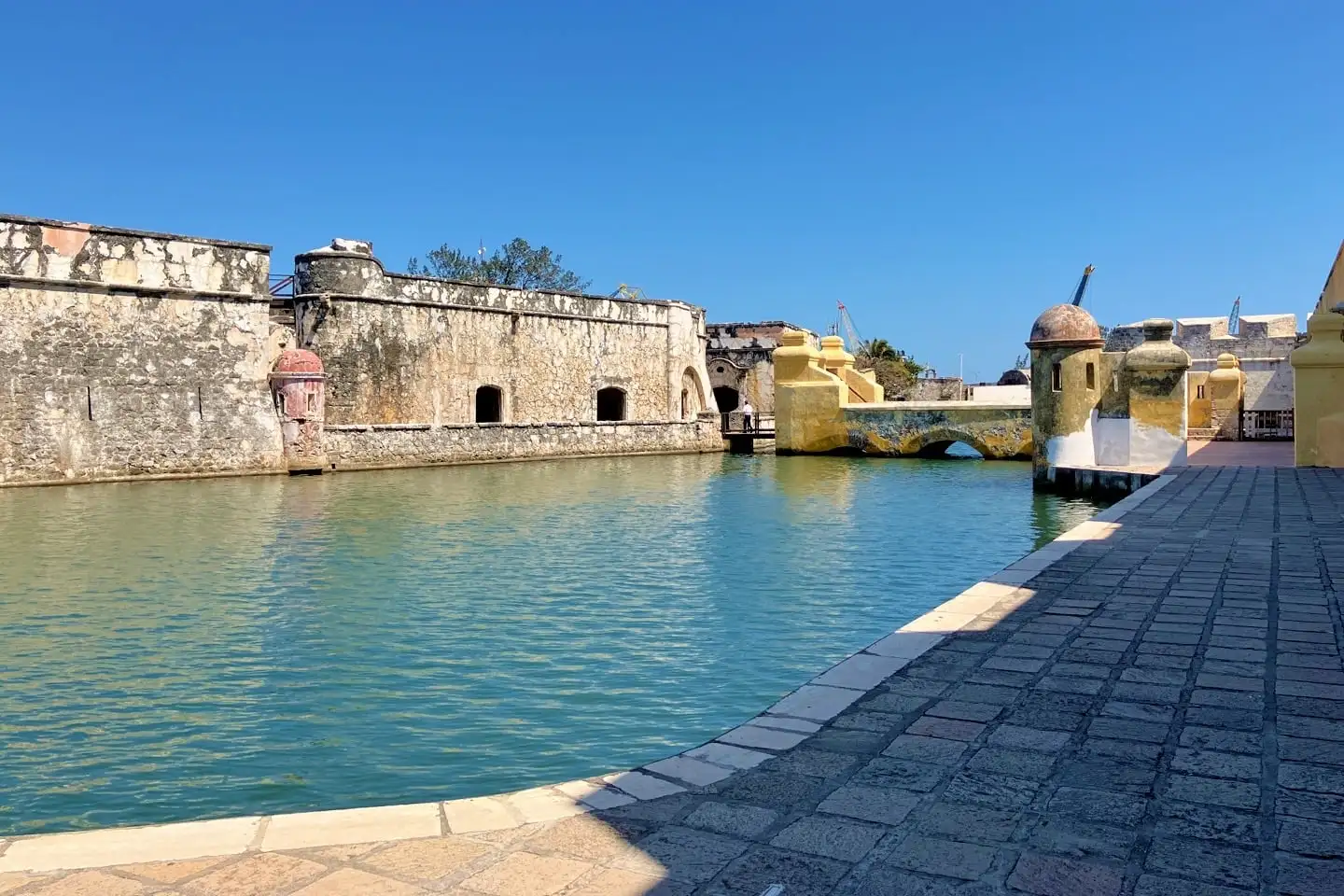
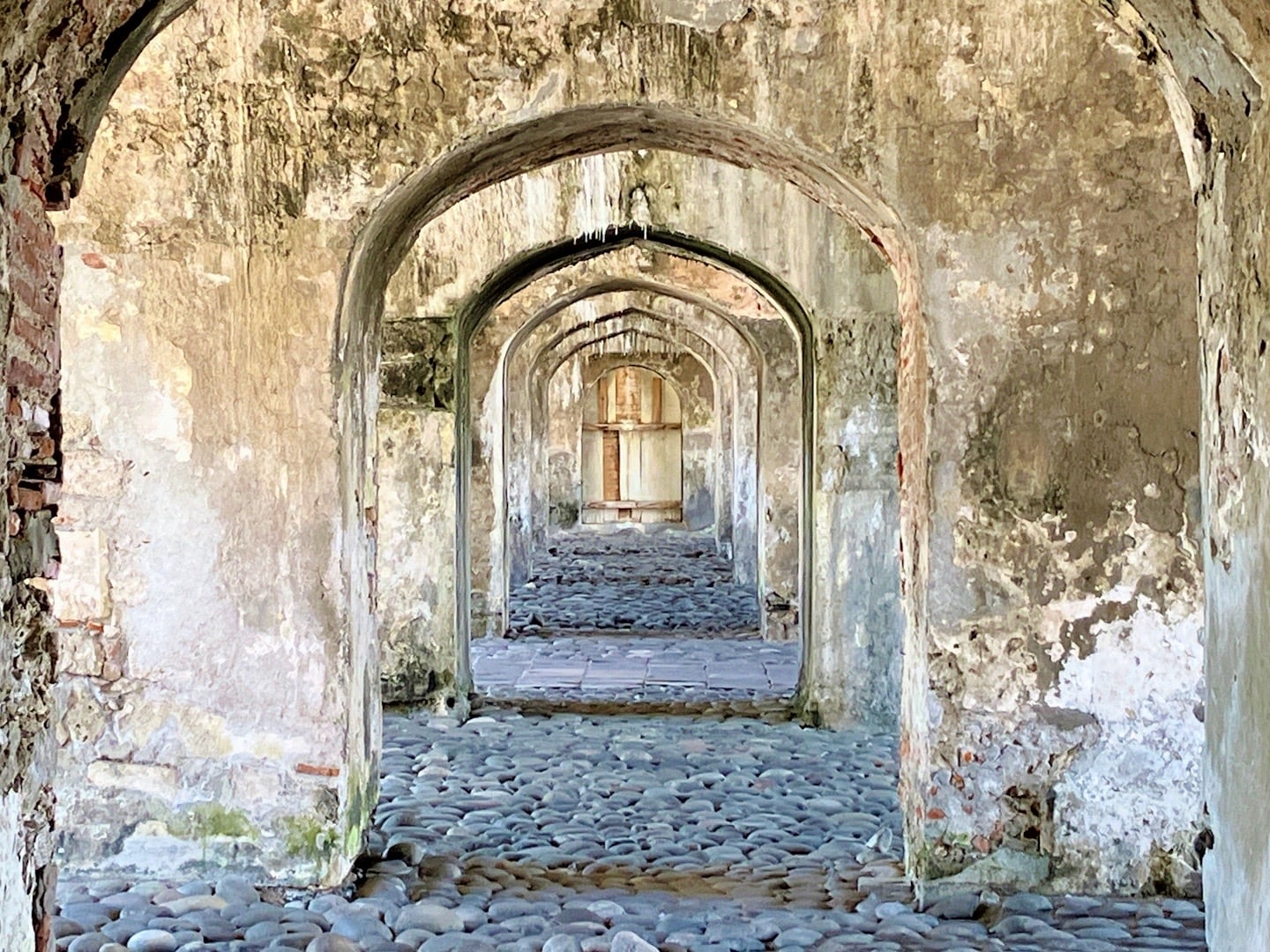
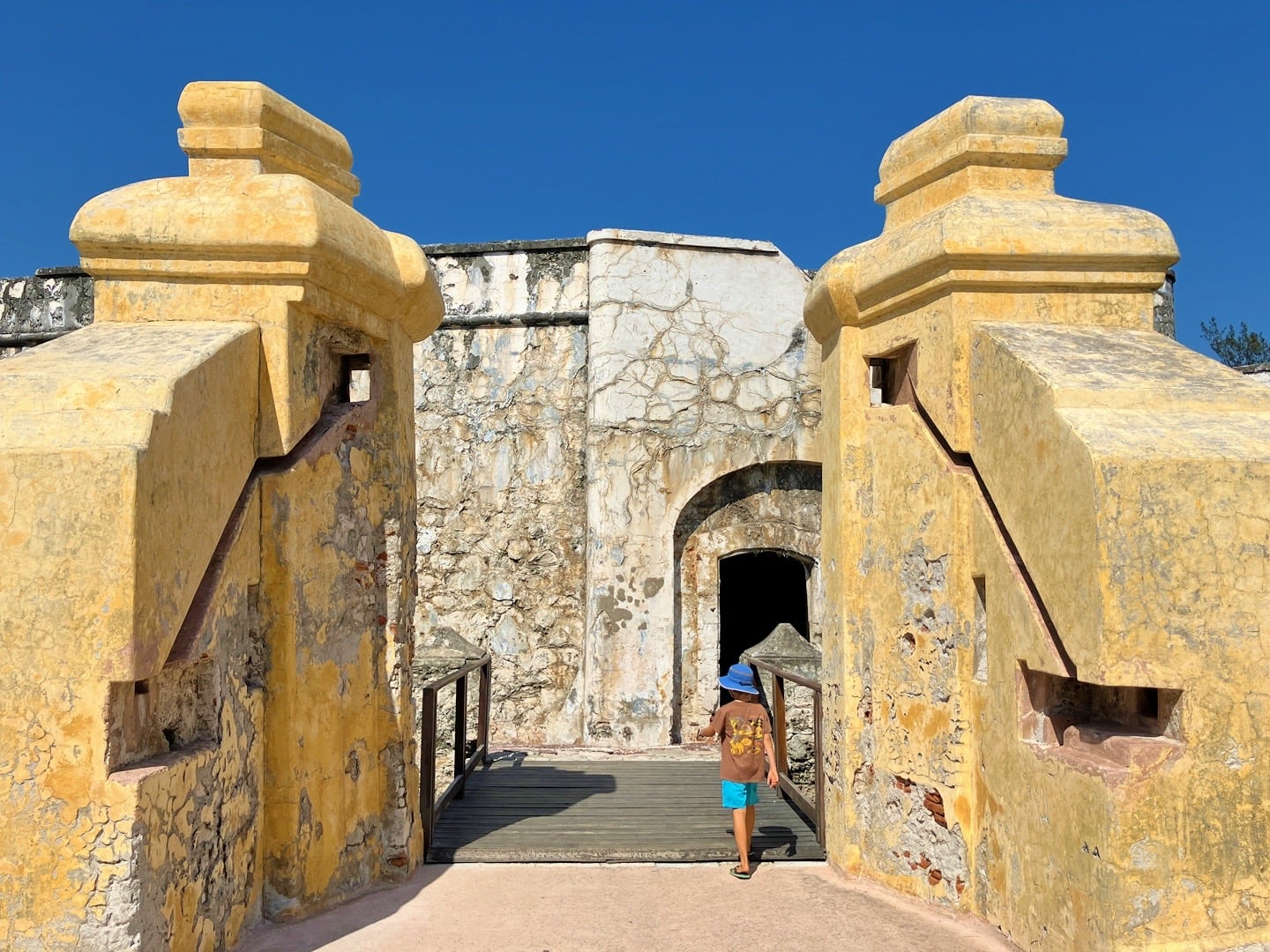
Before we dive into our own experience and tips for visiting, you may be wondering why you might want to go out of your way to see this place (and it is a bit out of the way).
The pictures alone do a lot of the talking. That’s what initially piqued my interest. But this place is much more than just a great photo op.
First and formost, there’s a ton of history here. The Castle of San Juan de Ulúa (as it’s commonly called, though it’s actually a fort) has stood at the forefront of the history of Mexico (and New Spain before it) for hundreds of years. To experience the fort is to take a step back in time to some of the key turning points and events in the nation’s history.
Asthetically, San Juan de Ulúa is also in a class of its own. We’ve been all over Mexico and visited several forts constructed by the Spanish around the same time. What makes this one stand out is its location virtually surrounded by sea.
In that respect, it reminded me more of Fort Jefferson in Dry Tortugas National Park than anything we’ve seen on this side of the border. However, this fortification is much older, with construction starting as early as 1535. The oldest bricks of the structure are made from coral, which also sets it apart from most other Spanish strongholds in Latin America.
I thought touring San Juan de Ulúa gave us one of the more evocative experiences we’ve had in Mexico. It really does a great job of transporting you back in time. I also appreciated the fact that, while sections of the fort have been restored at various points, most of the structure has been preserved as is.
Plus, you have the option of taking a pretty cool period replica water taxi to access the fort.
There’s a lot of history too, which will undoubtedly fascinate the history buffs out there, and I cover more of that later in the guide.
So let’s get to it!
Worth Noting
Do keep in mind that Veracruz is not a UNESCO-designated city, and a lot of the city’s historic sites are pretty rough looking (including San Juan de Ulúa). There is no on-site museum at the fort, and services are pretty basic.
But we’d argue, that’s a big part of the fort’s allure. It is what it is—half historic structure, half urban exploration.
✪ Hot Tip If history and context is what you crave, be sure to also check out Veracruz’ excellent Museo Naval México (Mexico Naval Museum). There is an entire room devoted to fort there.
Getting There from Central Veracruz

Okay, we’ve managed to convince you that the fort is worth a visit. Now, you just want to know how to get there.
Beforehand, we asked around about getting there and received a couple of vague answers (which didn’t exactly surprise us here in Mexico). We were told to head down to the Pemex Tower and hop on the water taxi. Easy enough, we thought. And we followed that advice to a tee.
We arrived at the Pemex Tower (Antigua Torre de Pemex), which is next to the Veracruz lighthouse (Faro Venustiano Carranza), and didn’t really see an obvious ticket booth or water taxi pier.
We did eventually find the water taxi pier, but we just missed the boat and would have to wait another 45 minutes for the next. Instead, we hailed a taxi near the hospital and caught the water taxi on the return trip.
A bit of a pain for us, but good for you, since we now can share exactly how to get there and back using both methods!
Taking the “Pirate Ship” Water Taxi
I’m not sure if this is the most common way of getting to and from the fort, but it’s certainly the most fun!
The water taxi is a re-purposed modern-day vessel made to resemble the goleta Iguala, the first navy ship to fly the Mexican flag during the struggle for Mexican independence from Spain. Pretty cool!
The water taxi operates from 10am to about 4pm daily (closed Monday and Thursday). It departs from the T-Dock in town (find on map) and tickets are currently MX$45 each way.
At the time of our visit, it looked like just one boat did the route. We were told at the ticket office that the water taxi departs about every 30 minutes or so. On this afternoon, however, the boat departed shortly after returning and loading up.
It’s my understanding that the Iguala is relatively new and in the recent past you could access the fort by lancha (small skiff). However, we did not see any lancha arrivals and departures during our visit, so it’s unclear whether this remains a legitimate option.
Taking a Land Taxi
Taxis in Veracruz are well marked and sometimes even have lights to indicate that they are available for hire. Be aware that some taxis in Veracruz are actually colectivos (shared taxis), so a taxi may still stop for you if there are others already onboard.
Our taxi was a privado (just us) and set us back MX$120 for a one-way journey from the main road near the T-Dock to the San Juan de Ulúa ticket booth and main gate.
The advantages of going this route are that you can leave when you want and don’t have to wait for the next water taxi departure. You also get a good tour of the sizable Veracruz port (one of the largest in the country).
The downsides are that the journey take between 20 minutes or more (depending on where in town you leave from), and you might have to pay for the taxi to wait for you if you plan to return to town via taxi. Alternatively, you could roll the dice and hope you can nab one in the parking lot when you’re finished, but its far from certain.
Keep in mind, that if you go the taxi route, you may need to flex some basic Spanish to make this option work for you, but if you’re intreped enough to find yourself in Veracruz, you’ve probably got that covered.
Taking a Package Tour
Given the transport issues we encountered, we would certainly consider doing a tour the next time.
The tour option has the added benefits of getting to go with a knowledgeable guide and folding some of the city’s other top attractions in as well.
We strongly recommend this route to visitors who aren’t confident Spanish speakers or who don’t want to mess with putting all the pieces together themselves.
If we were planning our trip today, we’d probably do one of these:
✪ Fort + City Guided Small-Group Tour in English/Spanish
✪ Combo Tour Fort + Aquarium + Mandinga Boat Tour (Spanish)
How to Buy Tickets

Where to Buy
Tickets are available on-site at the entrance booth. Credit and debit cards are accepted, but carrying some pesos in Mexico is always advisable.
Entry Fees (as of 2025)
- General Admission: MXN $100
- Students, Teachers, Seniors: Free (with valid ID)
- Children under 13: Free
Opening Hours
- Tuesday to Sunday: 9:00 AM – 5:00 PM
- Closed Mondays
A Brief History of San Juan de Ulúa
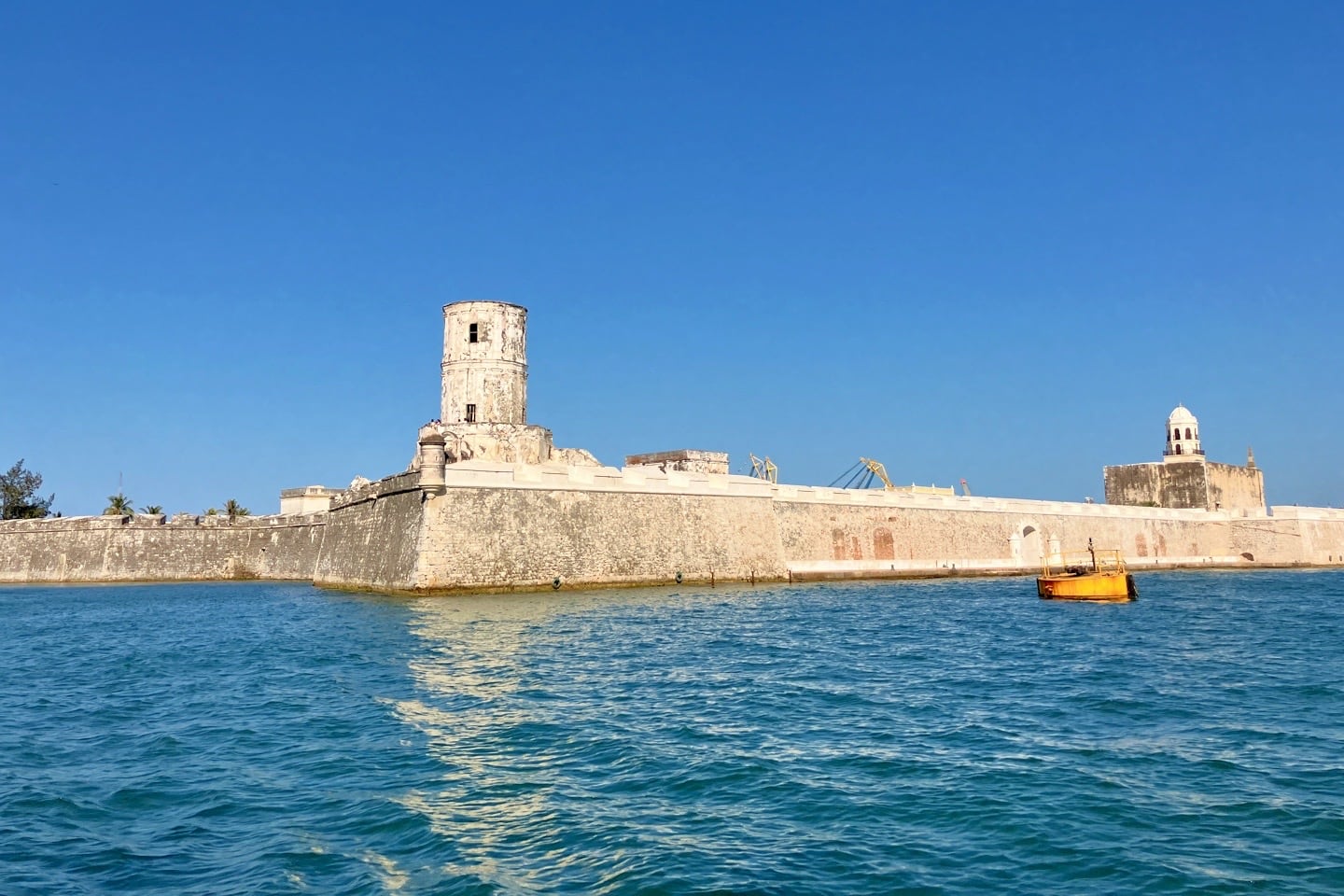
As mentioned above, to walk the corridors and plazas of San Juan de Ulúa is to be transported to some of Mexico (and New Spain’s) key events and turning points in history, in which this place has played a central role.
Construction of San Juan de Ulúa began in 1535 under Spanish rule to protect the port of Veracruz from pirates and foreign invaders. The fort was named after the island on which it stands.
At the time, Veracruz served as the main port of New Spain, and new treasures from the Americas were stored at the fort before being shipped to Europe. The Spanish forces used it as their last stronghold in Mexico, finally surrendering in 1825.
From the 19th to mid-20th century, the fort housed prisoners—including political dissidents and revolutionaries—earning a reputation for being inescapable.
Today, it operates as a museum managed by INAH (Instituto Nacional de Antropología e Historia), preserving centuries of artifacts and history. It was added to the UNESCO Tentative List in 2022.
Must-Visit Areas Inside the Fort

The fort is sprawling and full of hidden corners, and some of the best areas are easy to overlook. Here are the highlights you shouldn’t miss:
The Main Bastion (Baluarte de San Crispín)
One of the best-preserved sections, this bastion offers panoramic views of Veracruz Bay and the old port.
The Prison Cells
These dark, humid chambers once held some of Mexico’s most infamous prisoners. The eerie atmosphere and preserved shackles give a chilling glimpse into the fort’s darker chapter.
The Treasury Room
This area once stored gold and silver destined for Spain. The heavy stone architecture and reinforced vaults reflect its importance.
Governor’s Quarters
Explore the more “luxurious” side of the fort, where Spanish officials once lived in relative luxury.
The Drawbridge and Moat
A throwback to Spanish-colonial engineering—these defenses were designed to keep out invaders who wanted to seize Spain’s booty and control this prime piece of real estate (of which there were many).
The Chapel of San Juan de Ulúa
A small chapel where sailors and soldiers prayed before departing on perilous voyages.
The Ramparts
Walk along the massive walls for great views of the Gulf and the bustling Veracruz port—one of the most iconic spots in the city for a photo.
More Insider Tips for a Seamless Visit
- Go Early: Arrive when it opens to beat the heat and crowds.
- Bring Water: The sun and humidity can be intense, and pickings are slim in the area.
- Wear Comfortable Shoes: The stone floors and steps are uneven and sometimes slippery. Watch your step!
- Photography Tip: The best light for photos is early morning or golden hour.
Our Experience
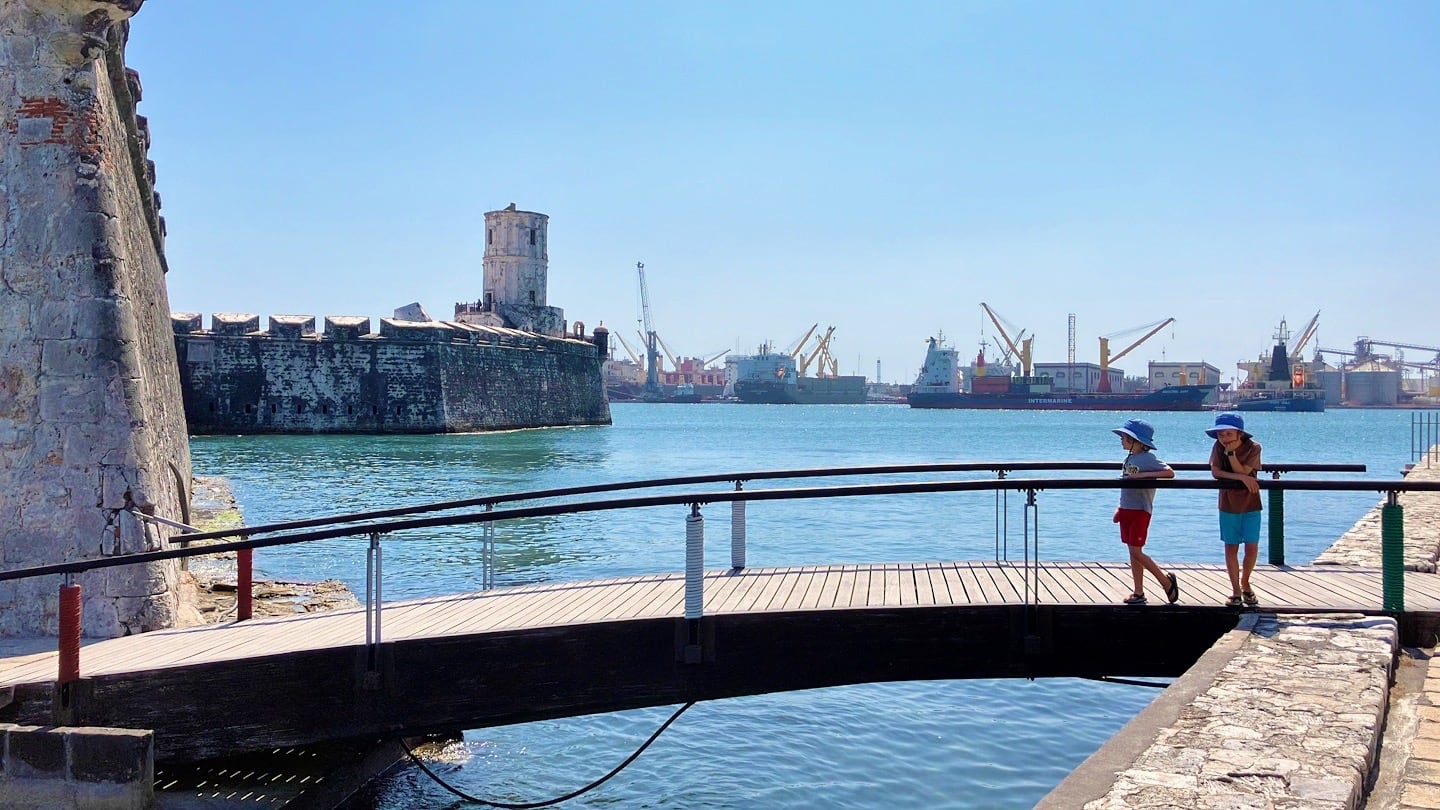
From the ticket booth, the fort is a stone’s throw away. Immediately, the four of us were struck by the clarity of water and the numerous marine creatures you could see from the first bridge, including large crab.

The next thing to catch our boys’ eyes were the coral stones that make up much of the outer walls of the older sections, some dating to 1535 when construction began.
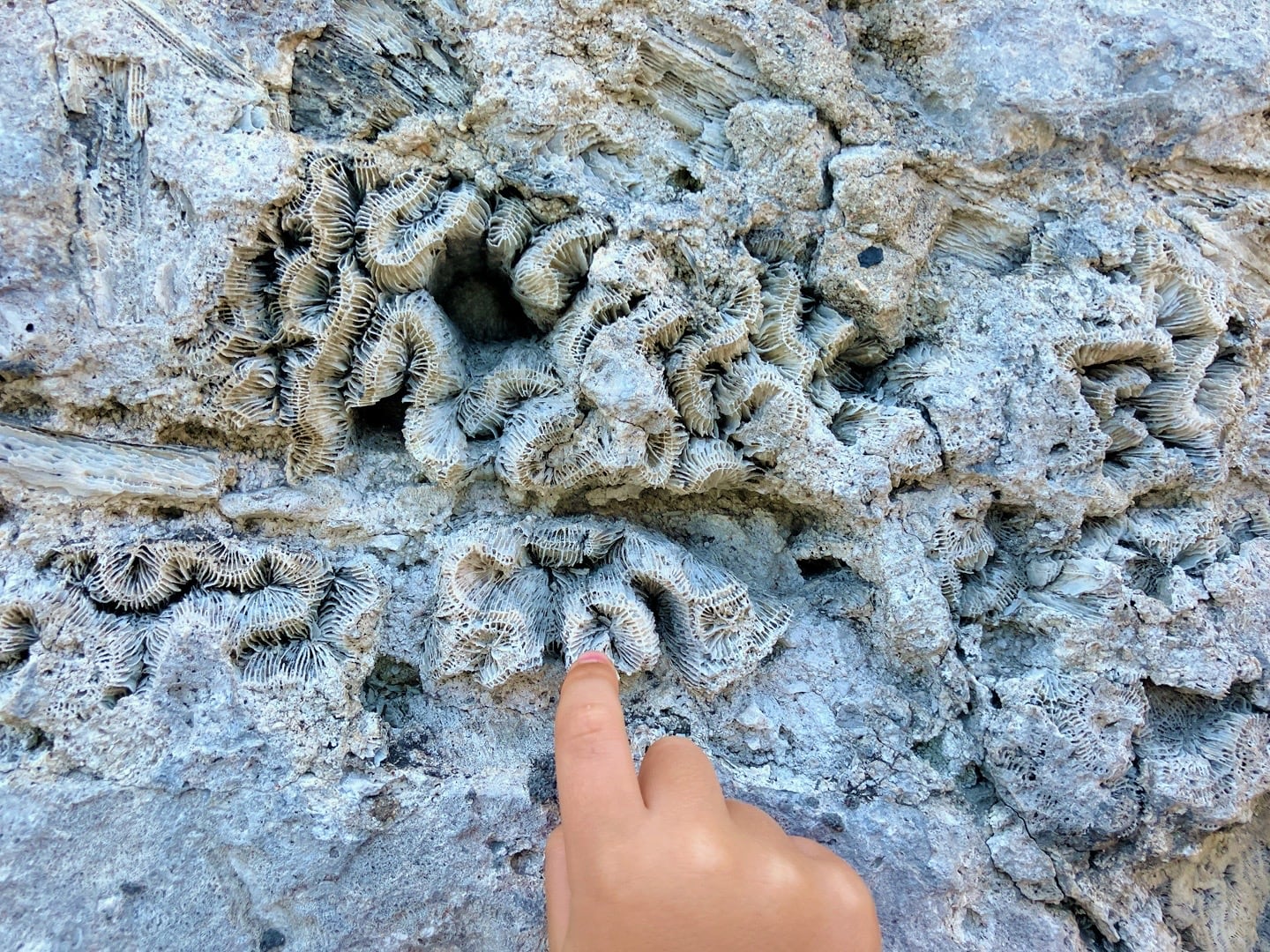
Of all the fortifications we’ve poked around in Mexico, this one might very well be the most photogenic.
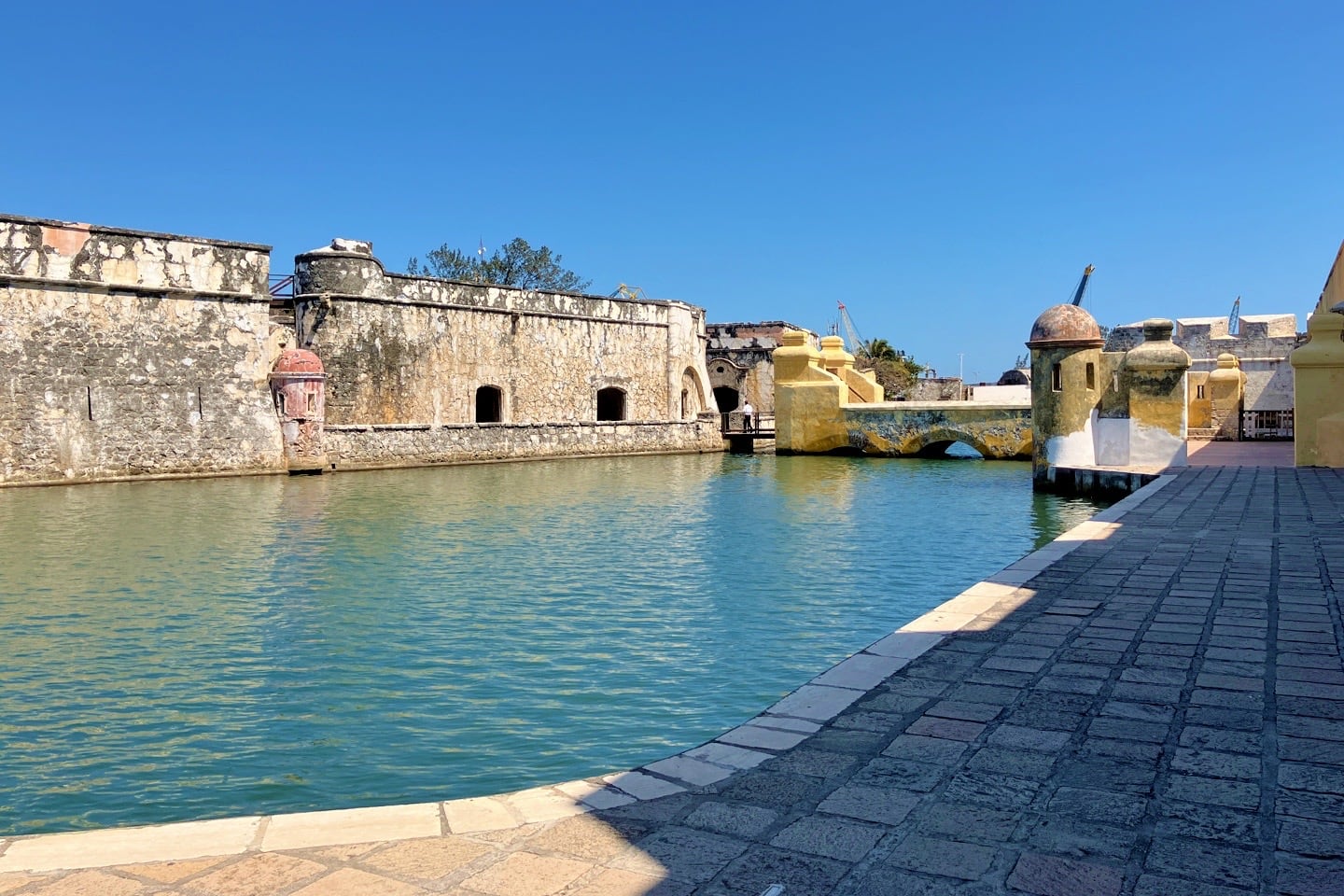
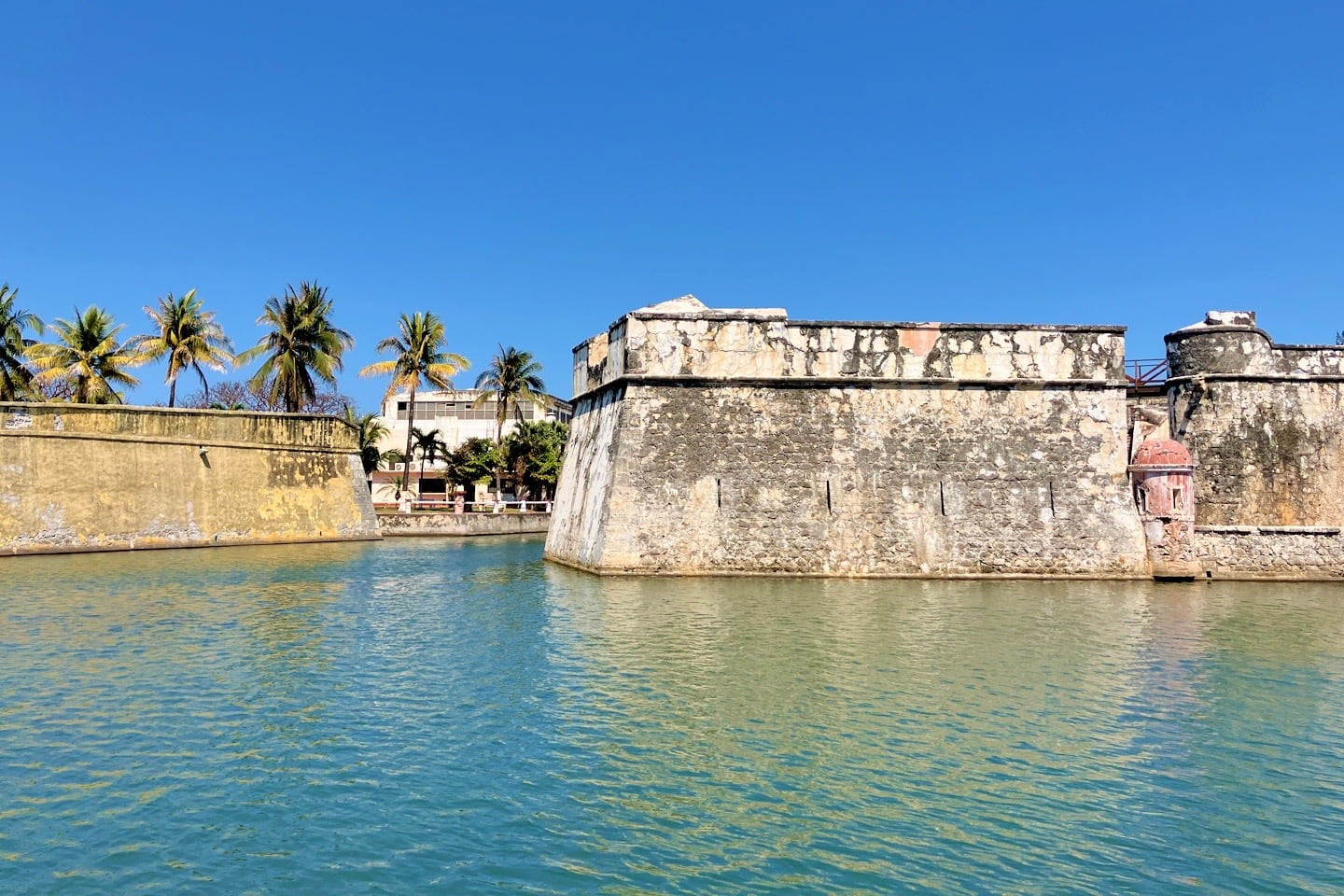
San Juan de Ulúa has a seemingly endless number of nooks and crannies to explore.
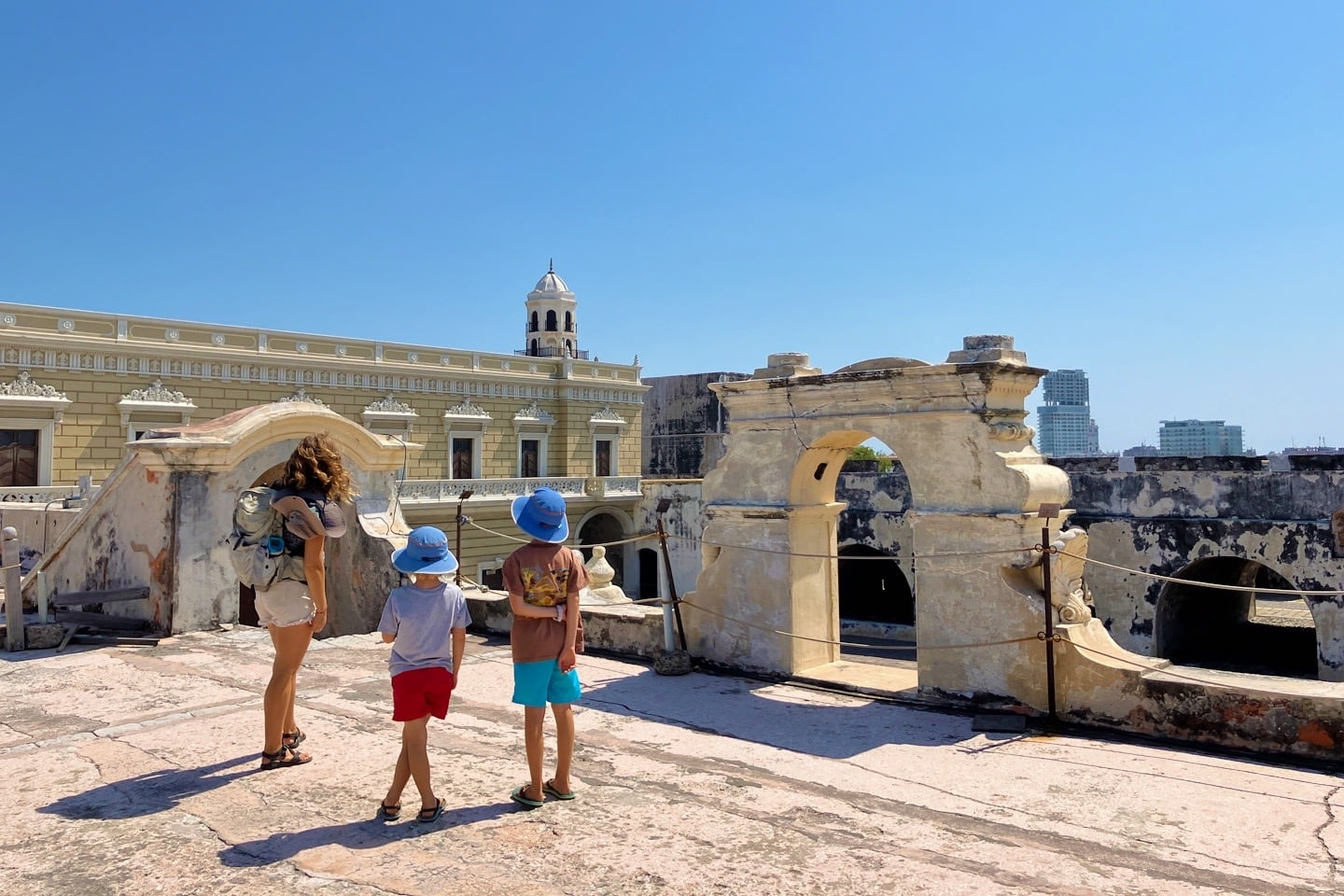
Stairs lead to the top of the structure where we were able to partially ascend the old tower and get some great views of the fort and harbor.



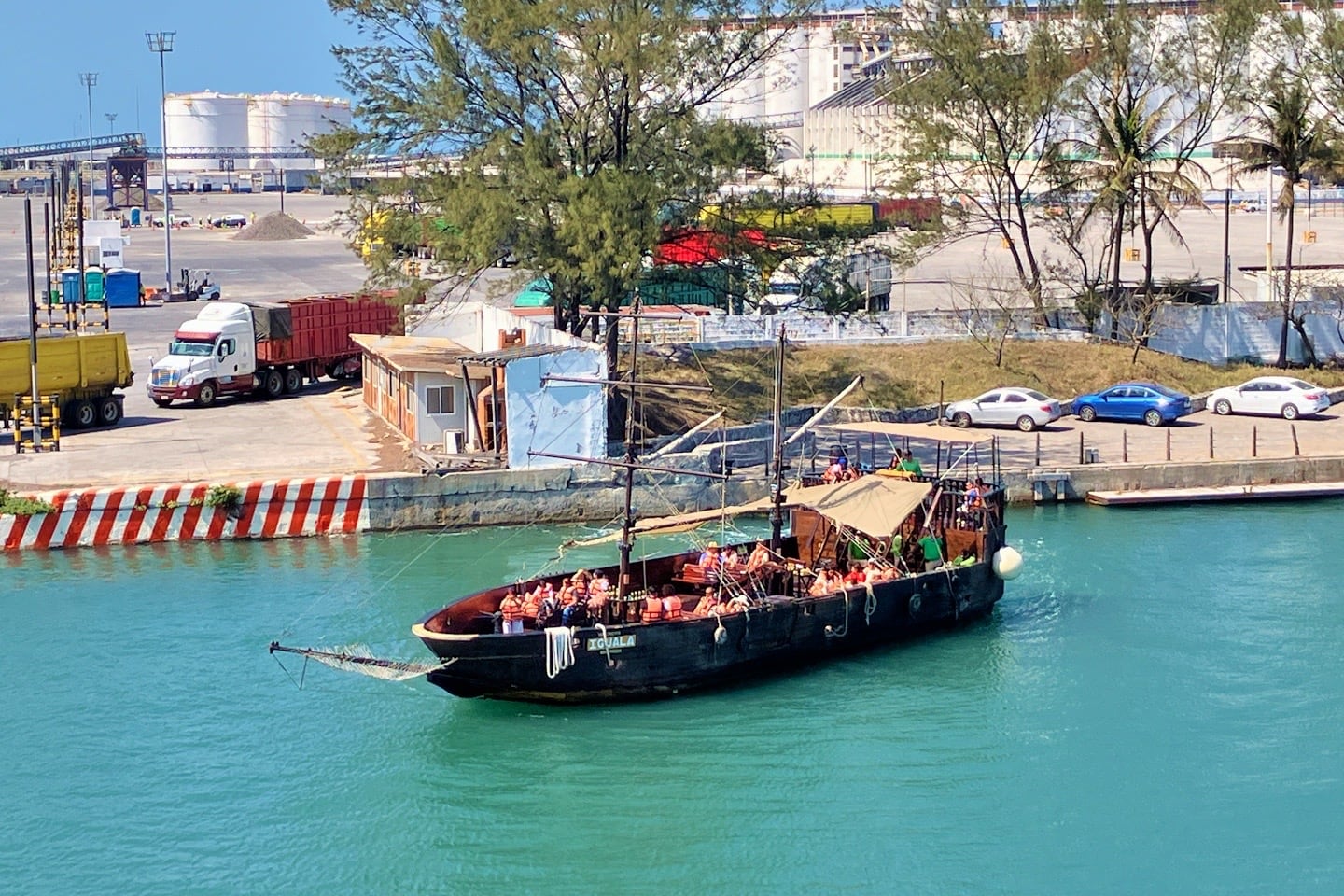
The water taxi that services the fort is an old Merchant Marines vessel repurposed to look like a Spanish Goleta (that’s it, above).



Veracruz was the main port for the transatlantic slave trade in New Spain. This is where captives arrived by sea and disembarked before being processed and transported to the interior to work on plantations.
By the time Spain abolished slavery in 1820, Mexico had already gained its independence. President Guerrero signed a decree in 1829, but full emancipation in Mexico did not take place until 1837.
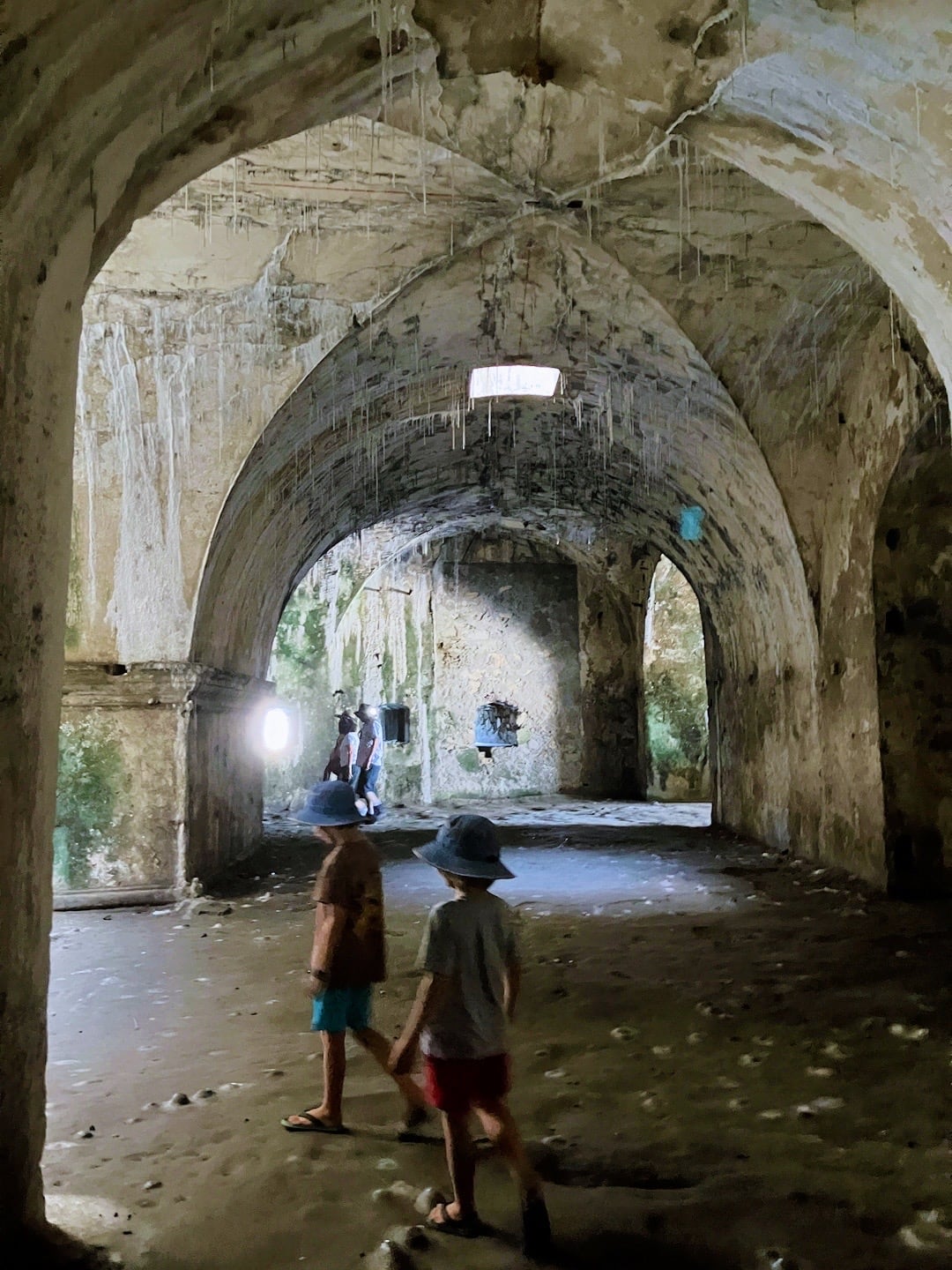
This is the oldest corner of the Fort, which has been largely left to decay to the dismay of many locals. In its current state, it adds an eery feel to an already unsettling area of the complex.

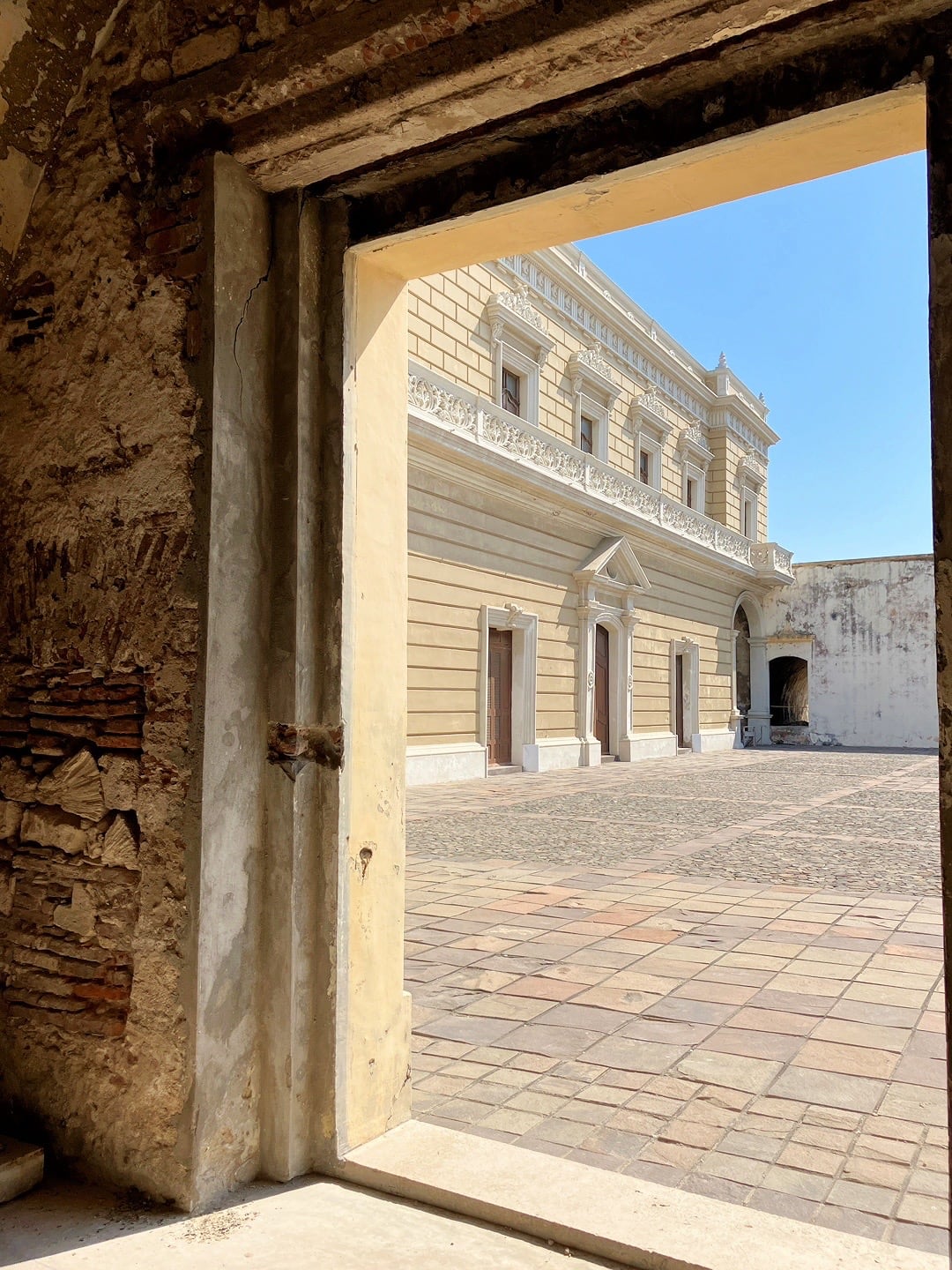

We cross a small wooden foot bridge and find ourselves in the former prison section, which became Mexico’s most notorious prison under the presidency of Porfirio Díaz in the early 20th century.
It is rumored that sharks were placed in the surrounding waters to make it more difficult for prisoners to escape.

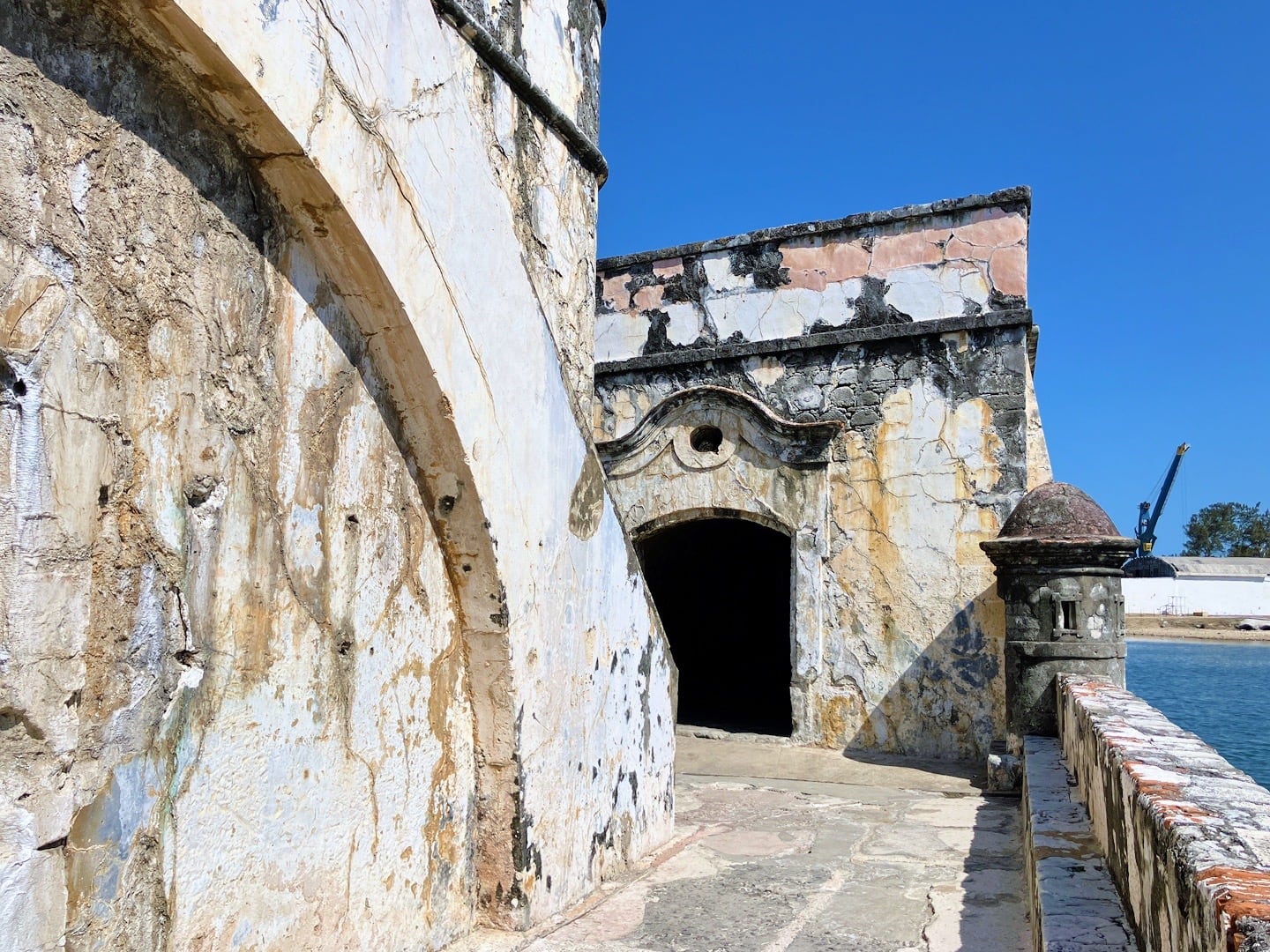
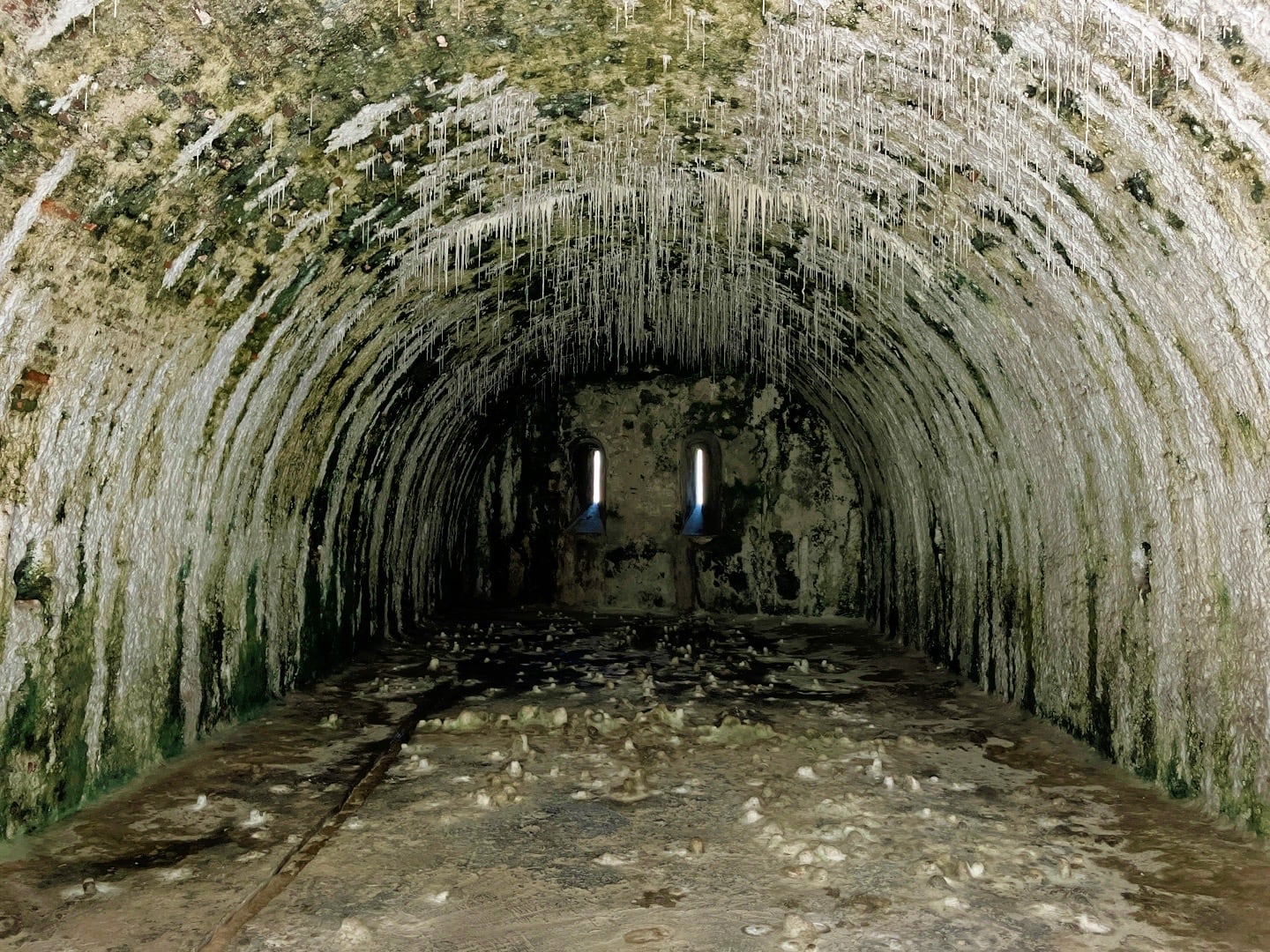
Best Time to Visit
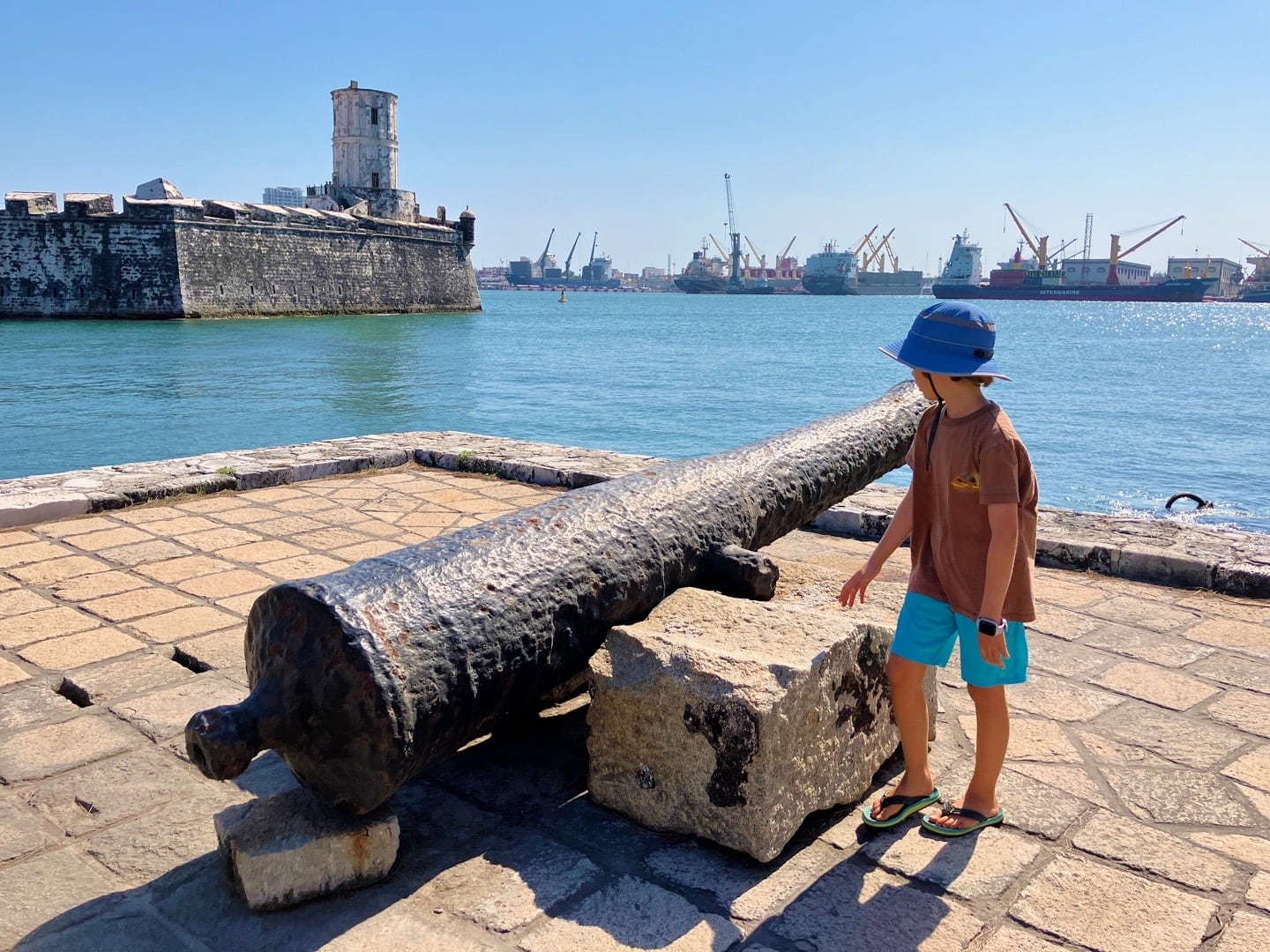
Veracruz’s tropical climate means the the fort can be visited year-round, but some seasons are better than others, depending on what you’re after.
Dry Season (November–April)
Arguably, the best time to visit. Temperatures hover between 75–85°F (24–29°C) with lower humidity. The skies are clear, ideal for photography and exploring without overheating.
Rainy Season (May–October)
Expect higher humidity and afternoon showers. While the rain adds atmosphere to the fortress, the stone floors can get slippery, so we recommend wearing sturdy shoes.
Time of Day
Visit early morning or late afternoon to avoid the midday sun (it gets HOT here!). Sunset from the ramparts offers golden light and cooler temperatures.
Safety Tips + Cultural Etiquette
- Stay Hydrated: The coastal heat can be draining. Bring a reusable water bottle.
- Respect the Site: This is a protected historical monument; avoid climbing or touching fragile structures.
- Mind Your Belongings: Veracruz is generally safe, but crowded areas may attract pickpockets.
- Use Sunscreen and a Hat: There’s little shade inside the fort.
- Be Courteous: If joining a guided tour, allow others to hear the guide. The echoing chambers can amplify noise.
Final Thoughts

We really enjoyed our visit to San Juan de Ulúa fort in Veracruz. In hindsight, we’re very glad we visited the Museo Naval México beforehand, as it provided a wealth of context for our visit that is lacking.
If you are short on time and can’t squeeze in a visit to the Naval Museum, I definitely encourage you to go with a tour. There are guides available at the fort, but there aren’t always English-speaking guides there. And going this route gets mixed reviews online. We recommend checking out this small-group fort and city tour option.
All in all, its a really interesting complex to explore packed with history and countless opportunities for photos. If you have the chance to visit, we highly recommend it!
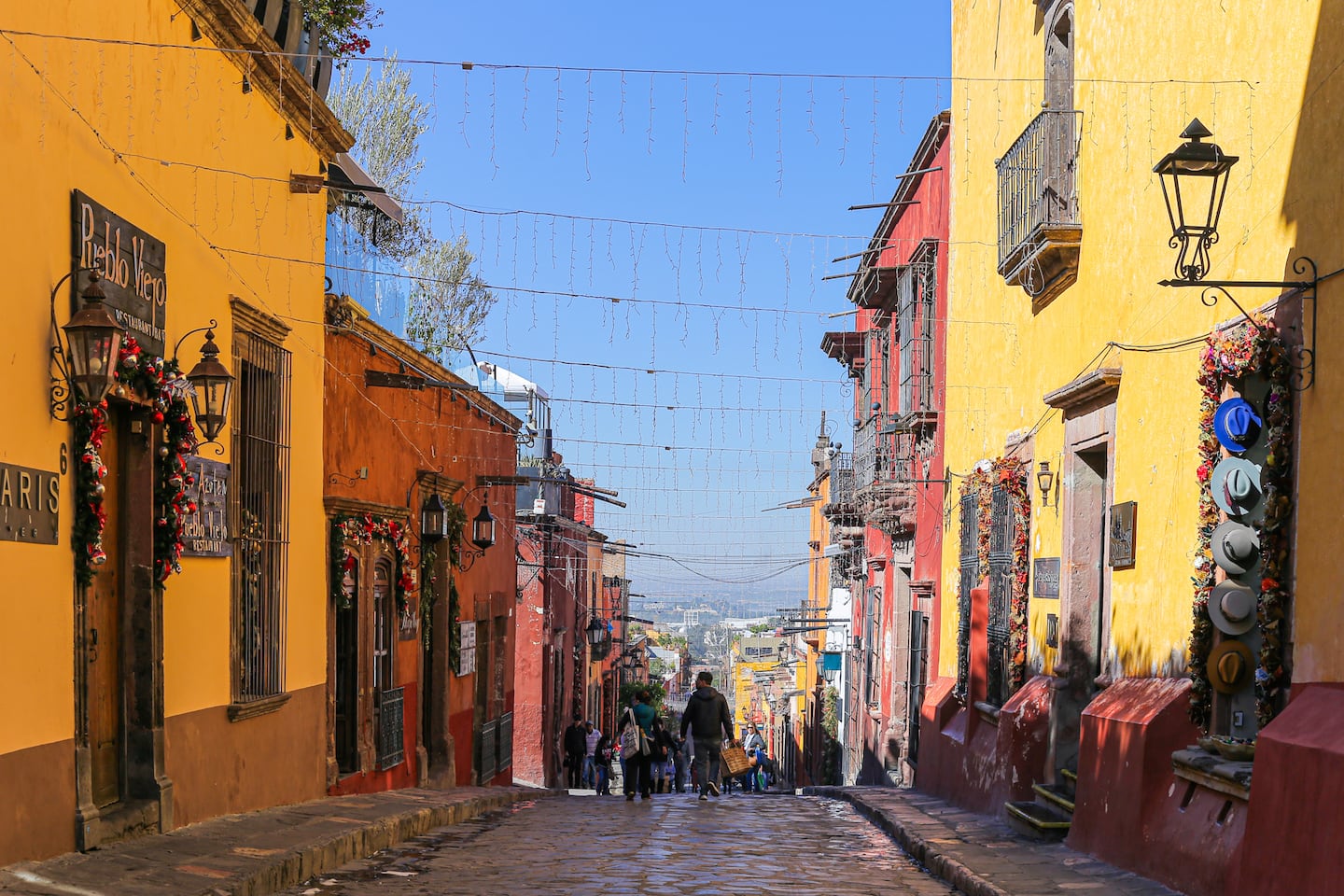
More Reading for Your Mexico Trip
The Yucatan & Caribbean
- Celestun Flamingos: How to Visit & What to Expect
- Chichen Itza: The Best Ways to Tour
- Izamal: 8 Reasons to Visit the Yellow City
- Puerto Morelos: 12 Wonderful Reasons to Visit
Central Highlands
- Teotihuacan Pyramids: 6 Best Ways to Tour from Mexico City
- Xochimilco Floating Gardens (CDMX): Visitor Guide
- Monte Albán (Oaxaca): Complete Guide to Visiting
- Sanctuary of Atotonilco (San Miguel de Allende)
- Isla de Janitzio (Michoacan): What to See & How to Visit
- Tzintzuntzan Pyramids & Pueblo Magico (Michoacan)
- Lava Church of Old San Juan Parangaricutiro (Michoacan)